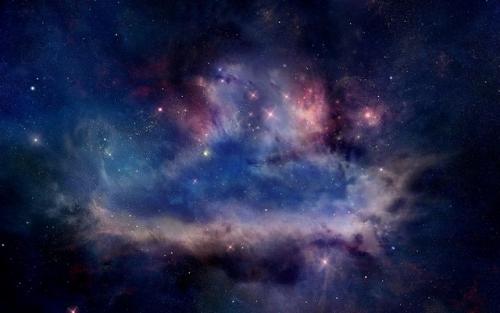Does extraterrestrial life exist?
- Opinión

NASA scientists have discovered a Trappist-1 star, 39 light years from the Earth, with seven rocky planets, three of which have possibilities of water and consequently of life. This discovery has raised again the question of the eventuality of extra-terrestrial life.
Let us reflect on the theme, based on notable names in this area.
The Earth sciences and the knowledge coming from the new cosmology have accustomed us to putting all these questions in the framework of the great cosmic evolution. Everything is in a process of genesis, a condition for life to emerge.
Life is considered the most complex and mysterious reality of the universe. The fact is that near 3.8 billion years ago, in an ocean or primordial marsh, under the action of unimaginable tempests of rays and cosmic elements from the Sun, interacting with the geochemistry of the Earth, took to the extreme the complexity of inanimate forms. Suddenly the barrier was surpassed: about 20 amino acids and four phosphate bases were created. Like a great lightning bolt striking the sea or marsh the first living being emerged.
As a qualitative jump in our bent space-time, in a corner of our median galaxy, in a secondary sun, in a planet of quantité négligeable, of medium size, in the Earth, the great novelty emerged: life. The Earth went through 15 massive great extinctions but, as if it were a plague, life was never extinguished.
Let us quickly review the internal logic that permitted life to emerge. The matter and energy of the universe, as they continue their process of expansion, tend to become ever more complex. Each system is in a set of interactions, a dance of inter-exchange of matter and energy, in a permanent dialogue with their environment and always retaining information.
Biologists and biochemists, such as Ilya Prigogine (1977 chemistry Nobel laureate), affirm that there is a continuity between living and inert beings. We need not appeal to a transcendental or external principle to explain the appearance of life, as religions and classic cosmology often do. It is sufficient that the universal principle, including of life, (called the cosmogenetic principle), of complexity, of self-organizing and self-creation, would have been present in embryonic form in that smallest little point that had emerged from the Basic Energy, and later exploded. One of the best present day physicists, Amit Goswami, maintains the thesis that the universe is mathematically inconsistent without the existence of a supreme ordering principle, God. This is why, to him, the universe is self-conscious. (The self aware universe, 1998).
The Earth is not alone in having the privilege of life. According to Christian de Duve, biology 1974 Nobel laureate: «There are as many living planets in the universe as there are planets capable of generating and of sustaining life. A conservative estimate puts their number into the billions. Billions of biospheres ply the space with billions of planets channeling matter and energy in the creative processes of evolution. In any direction of space that we may look there is life (...). The universe is not an inert cosmos of physics, with a pinch of life as a precaution. The universe is life with the necessary structures surrounding it» (Vital Dust: Life as a Cosmic Imperative, 1996. Polvo vital: La vida como imperativo cósmico, Río de Janeiro, 1997, 383).
It is to astronomy's credit that it has identified, in the millimeter fringe, a group of molecules in which everything can be found that is essential to start the process of biological synthesis. (Longair, M., The origins of our universe, Río de Janeiro, 1994, 65-66). Amino acids have been found in meteorites. These certainly are the eventual carriers of the archeo-bacteria of life. Probably there were several beginnings of life, many of them frustrated, until life was definitively established.
It is presumed that the most diverse forms of life come from only one original bacterium (Wilson, O. E., The diversity of life, 1994). With the mammals emerged a new quality of life: emotional sensibility and caring. Among the mammals, about some 70 million years ago, the primates stood out; then, some 35 million years ago, the superior primates, our genealogical grandparents, and some 17 million years ago, our predecessors, the hominids. About 8-10 million years ago the human being, the australopithecine, emerged in Africa. Finally, around 100 thousand years ago, there appeared the Homo sapiens-sapiens/demens-demens, of whom we are immediate inheritors (Hubert Reeves and others, The most beautiful story in the world, 1998).
Life is not the fruit of chance (contrary to Jacques Monod, Chance and necessity, 1979). Biochemists and molecular biologists have shown (thanks to random number generating computers), the mathematical impossibility of simple and pure chance. For the amino acids and the two thousand underlying encimas to come close enough together to form a living cell would take billions and billions of years, much more than the 13.7 billion year actual age of the universe.
The so-called chance is expression of our ignorance. We estimate that ascending evolution will produce more and more life, even extraterrestrial.
- Leonardo Boff, Theologian-Philosopher, Earthcharter Commission 03-03-2017
(Free translation from the Spanish sent by Melina Alfaro, alfaro_melina@yahoo.com.ar. Done at REFUGIO DEL RIO GRANDE, Texas, EE.UU.)
Del mismo autor
- O risco da destruição de nosso futuro 05/04/2022
- Reality can be worse than we think 15/02/2022
- ¿Hay maneras de evitar el fin del mundo? 11/02/2022
- Há maneiras de evitar o fim do mundo? 08/02/2022
- The future of human life on Earth depends on us 17/01/2022
- El futuro de la vida depende de nosotros 17/01/2022
- A humanidade na encruzilhada: a sepultura ou… 14/01/2022
- “The iron cage” of Capital 04/01/2022
- Ante el futuro, desencanto o esperanzar 04/01/2022
- Desencanto face ao futuro e o esperançar 03/01/2022
